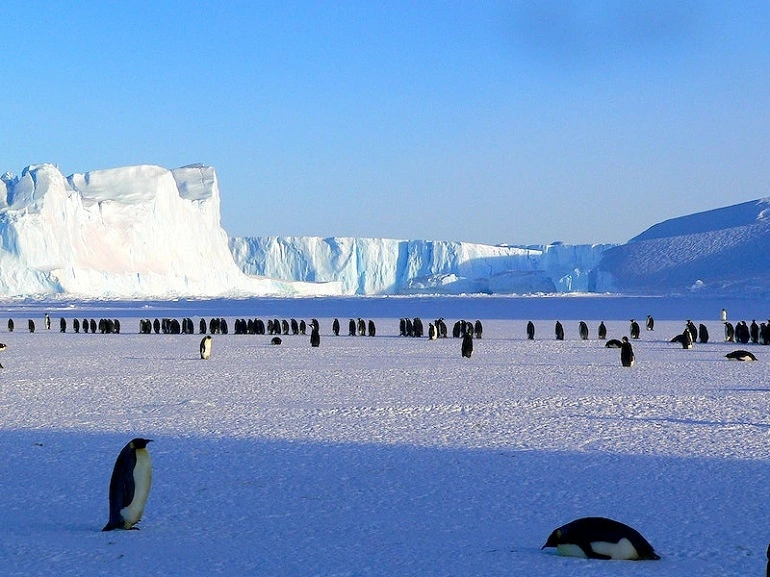Introduction:
Antarctica, the southernmost continent on Earth, is a unique and fascinating place. It is the coldest, driest, and windiest continent, covered by ice sheets up to 4.5 kilometers thick. Despite its harsh conditions, Antarctica is home to many forms of life, from penguins and seals to microorganisms living in ice and water.
But who controls Antarctica? Is it a land of no one or a territory of everyone? The answer is more complex than that. Antarctica is subject to the Antarctic Treaty System, an international agreement signed in 1959 that regulates the continent’s governance, environmental protection, scientific research, and resource exploitation. In this article, we will explore the Antarctic Treaty System and its key components.
Antarctic Treaty System:
The Antarctic Treaty System is a set of international agreements and protocols that apply to the land and ice shelves south of 60 degrees South latitude. The treaty has 54 parties, including the United States, Russia, China, and all countries with territorial claims in Antarctica. It sets the framework for the governance of Antarctica and aims to promote scientific research and environmental protection.
Governance:
The governance of Antarctica is based on the principles of the Antarctic Treaty, which include the peaceful use of the continent, freedom of scientific research, and prohibition of military activities. The Treaty also recognizes the existing territorial claims but suspends them in favor of the Treaty’s objectives. The Treaty Parties meet every year in the Antarctic Treaty Consultative Meeting to discuss and make decisions on Antarctic issues.
Sovereignty and Territorial Claims:
Several countries, including Argentina, Chile, and the United Kingdom, have territorial claims in Antarctica. These claims overlap and conflict with each other, creating a complex geopolitical situation. The Antarctic Treaty does not recognize these claims, but it does not reject them either. Instead, it suspends them until such time as the claims can be resolved by peaceful means.
Environmental Protection:
Antarctica is a unique and fragile ecosystem that requires special protection. The Protocol on Environmental Protection to the Antarctic Treaty establishes measures to protect the environment and its dependent and associated ecosystems, including the prohibition of activities that could cause significant adverse effects on the environment.
Scientific Research:
Antarctica is an ideal laboratory for scientific research in a wide range of fields, including climate change, astronomy, and biology. The Antarctic Treaty promotes and facilitates scientific research by providing access to research areas and data, encouraging international scientific cooperation, and ensuring the exchange of scientific information.
Resource Exploitation:
Antarctica is rich in resources, including fish, krill, and minerals. The Protocol on Environmental Protection also regulates activities related to resource exploitation to prevent damage to the environment. The Convention on the Regulation of Antarctic Mineral Resource Activities, signed in 1988, establishes a framework for the management and conservation of mineral resources in Antarctica. However, the Convention has not entered into force yet, as some key countries have not ratified it.
Regulations:
Antarctica is subject to various regulations, including fishing regulations and environmental regulations. The Commission for the Conservation of Antarctic Marine Living Resources regulates fishing in the Southern Ocean, ensuring that fishing does not harm the ecosystem. The Committee for Environmental Protection advises the Antarctic Treaty Parties on environmental matters and monitors compliance with the Protocol on Environmental Protection.
Frequently Asked Questions:
Q: Who governs Antarctica?
A: The Antarctic Treaty System (ATS) governs Antarctica, with 54 countries as signatories.
Q: When was the ATS established?
A: The ATS was established in 1959.
Q: What is the main purpose of the ATS?
A: The main purpose of the ATS is to ensure that Antarctica is used for peaceful purposes and that no country can claim territorial sovereignty over the continent.
Q: Which countries have signed the ATS?
A: 54 countries have signed the ATS, including the United States, Russia, China, Australia, and most of the countries in Europe and South America.
Q: What are the key provisions of the ATS?
A: The key provisions of the ATS include a ban on military activities in Antarctica, the promotion of scientific research in the region, and the requirement for signatories to consult with each other before undertaking any activity in Antarctica.
Q: Are there territorial disputes over Antarctica?
A: While the ATS prohibits territorial claims in Antarctica, some countries have made claims to parts of the continent that are not recognized by other signatories to the treaty.

2 thoughts on “Who Controls Antarctica ?”